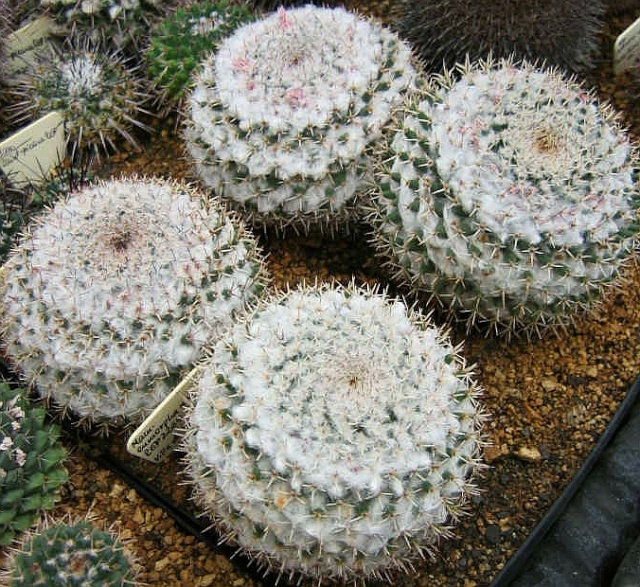First description: Reppenhagen ( ex Tamegger et Knees sp.nov.)
Body: Flattened to depressed-globose, single, also double or triple headed, 20-80 mm long and 40-150 mm wide. Apex is flattened, sunken covered by wool.
Roots: Skein-like.
Sap: With latex.
Tubercule: 10-14 mm long and 7-9 mm wide, medium set, firm pyramidal,, with whitish-yellow wool, later naked.Bluish green.
Axil: Often with very much white wool.Areoles are about horizontal on the tubercle, sunken, circular, about 2 mm in diameter, in new growth with fluffy white wool.
Radial spine: 3-4, 4-6 mm long, awl-shapened thickened, no one particularly short or long, straight or curved, smooth or rough, somewhat thickened at base and brown, slightly projecting, white to brownish with darker tips. Additionally often 2-3 additional spines, very thin, upwards and whitish.
Central spine: 1, 4-6 mm long often missing,not thicker than the radials, straight, smooth, more pointing upwards, with a thickened brown foot, of equal colour as the radial spines.
Flower: Broad funnelform, 15-20 mm long and in diameter, whitish with a brownish midstripe.
Fruit: Pink to red, clavate, 15-25 mm long, 4-7 mm in diameter. Fresh fruits are almost white and change color later. Ripening about 5 months after flowering. Self sterile.
Seed: Drop to roundish kidney shaped, light brown, 0,8-0,9 mm long and 0,6-0,7mm wide.
Geographic Distribution: San Luis Potosi,Villa de Reyes, Mexico. Altitude 1.800 m.
Habitat Substrate: On hills near Villa de Reyes on volcanic rocks.The soil is a brown fine soil infiltraded with gravel.
Bibliography: AfM journal (3) 2008

